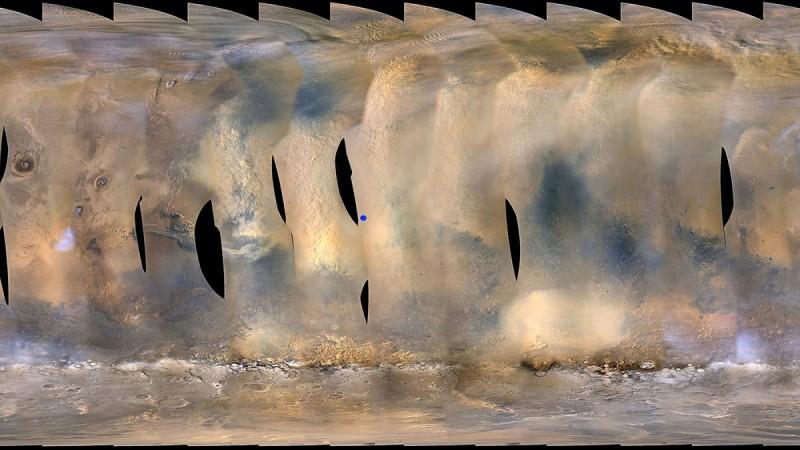
NASA's Opportunity Rover has been exploring Mars since 2004 and has now powered down to weather out a massive storm on the red planet. It is one of the largest storms that the rover has had to encounter and there are chances that the rover could become too cold to continue with its experiments.
A statement put out by the space agency has detailed the circumstances that Opportunity is facing now. "A dark, perpetual night has settled over the rover's location in Mars' Perseverance Valley. The storm's atmospheric opacity- the veil of dust blowing around, which can blot out sunlight -- is now much worse than a 2007 storm that Opportunity weathered." reads the release.
Opportunity is a solar powered machine, so it needs the sun power it, and most importantly, keep warm. The release points out that while the 2007 storm had an opacity level of around 5.5 tau (unit of opacity describing a specific level of transparency), this storm has the opacity of about 10.8 tau, almost twice as dark.
One of the good things that dust storms such as this can bring on Mars, notes the report, is a certain level of balance to the extreme temperature swings that is common on the Martian surface. While the sun does get blotted out, the swirling dust can also absorb heat and warm up the surroundings to a stable temperature. However, with no sunlight to charge up the rover's batteries, it could lose too much heat and eventually die out. NASA says that it was the cold that killed the Spirit Rover in 2010
NASA has still decided to hunker down the rover and wait for the storm to pass. Opportunity's science missions have been put on hold, notes the release. The rover has proven to be a lot more hardy than expected and has lasted almost 15 years when it was actually built only for a 90 day mission– 50 times longer than originally intended.
This dust storm that has hit Mars is simply massive, notes the report. First spotted by NASA's Mars Reconnaissance Orbiter (MRO) on 1 June, the orbiter team then notified the Opportunity team to prepare for any contingency that might come as a result. The storm then, over the next week or so continued to grow. The release notes that this dust storm now 18 million square kilometers big. That is an area larger than all of North America. It covers the Perseverance Valley where Opportunity is now located.
.















